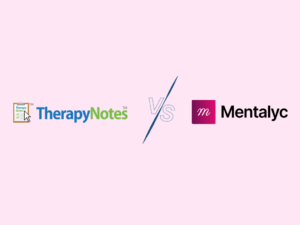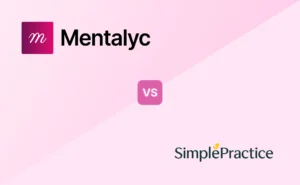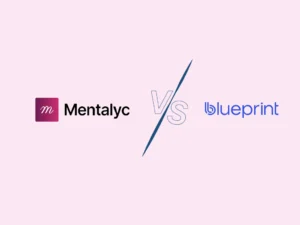Progress notes are vital aspects of mental health care. They keep track of the therapeutic process and provide a record of the client’s progress. However, therapists can make mistakes during the documentation, which compromises the effectiveness of client treatment. This can subject clinicians to vulnerabilities related to professional liability.
These errors include using unclear language and failing to give accurate details in the progress notes. It can lead to confusion, miscommunication, claims refusal, or legal issues. This article will discuss some common errors therapists make in progress reports. It would also provide tips on how to avoid them.
What Are Progress Notes?
Progress notes are very important in therapy. They provide essential details on client sessions and the progress of treatment. This report accounts for the number of sessions the therapist has had with the client, interventions and treatment outcomes. Every progress note should include the client’s present mental status and behavioral observations. It also shows the future approaches to client treatment.
Therapists’ progress notes have to meet specific guidelines before documentation. These guidelines are established by insurance organizations, regulatory agencies, and professional healthcare organizations. These conditions protect the client’s rights, and ensure continuous care. They also ensure risk management, quality assurance, and accountability.
Common Mistakes Therapists Make in Progress Notes and How to Avoid Them
To serve their intended function, progress notes must be written correctly and concisely. Some common errors therapists make during documentation include:
1. Lack of Clarity
Ambiguity in progress notes can result in miscommunications that could affect client care.
For Example:
Unclear: “Client seemed better today.”
Clear: “Client kept eye contact 80% of the session. He slept 7 hours per night for two consecutive nights, an increase of 4 hours from last week.”
To avoid this mistake, therapists should use specific and measurable language. To do this, therapists need to document the exact duration of sessions. They would also need to include measurable behaviors and state specific symptoms.
Therapists may also need to provide relevant context like referencing previous sessions. They must also ensure that observations connect to treatment goals. Therapists are required to input the client’s actual words where necessary. They can also use the BIRP format. I.e. Behavior (what you observe), Intervention (therapeutic approach), Response (of clients), and Plan.
For Example:
“The client described having 3 episodes of panic attacks this week. This has reduced from 5 last week. Each attack lasted about 15 minutes. This attack presented with rapid breathing, chest tightness, and racing thoughts. The client was encouraged to continue using grounding techniques and monitor the symptoms.”
“Client practiced 10 minutes of deep breathing exercises in today’s session. Anxiety levels reduced from 8/10 to 4/10 on the subjective units of distress scale. The client was advised to continue deep breathing exercises daily and track the anxiety levels for review in the next session.”
2. Incomplete Information
Inadequate information for progress notes impact on client care and treatment efficacy. When therapists fail to document, key details in the continuity of care are missed. There is also the risk of delayed treatment and mismanagement in client care.
The critical elements in progress notes are the client’s current mood and interventions. Others include the client’s response to interventions, progress, and updates on risk assessment. The therapist can include changes to medication and follow-up appointments or referrals.
3. Inconsistency Across Documentation
Consistency in progress notes allows for a clear account of client care, and progress. If a therapist’s documentation style changes, it becomes difficult to track the client’s progress. Common inconsistency issues like switching between the various note formats mid-treatment may occur. Using different wording for the same condition or intervention is also a documentation issue.
Therapists should avoid using inconsistent abbreviations or alternating between detailed and brief documentation. Instead, consider creating a guide consisting of a list of approved abbreviations. Use standard terminology for common conditions and consistent formatting templates. Mental health therapists can also use documentation templates to maintain structural consistency.
It is vital to include all important elements as a therapist. Using AI-powered progress note taking templates from Mentalyc can save time. It prevents the possibility of missing important details. Therapists can use Electronic Health Record (EHR) systems with customizable template features. This will help them to ensure that documentation is consistent. It also requires less work throughout their workflow.
4. Errors in Subjective Section
The subjective section of the SOAP notes (Subjective, Objective, Assessment, and Plan) is sensitive. It necessitates precise consideration and correct documentation methods.
Errors such as using direct quotes without context or listing personal biases as client comments are unaffordable. Others include ignoring major mood or behavior changes or recording irrelevant client information. Some therapists also fail to document the client’s own goals.
To document with accuracy, the therapist must record the client’s own words. Therapists must also link client statements to observable behaviors. It is also very important that therapists avoid personal judgments or assumptions. They must also ensure the proper use of clinical terminologies.
For Example:
Incorrect: The client displayed signs of depression together with a lack of motivation.
Correct: The client reported feeling moody for most days. He also found it difficult to get up from his bed. He started sleeping 12 hours daily and missed work twice this week.
The client’s current state should be clear in subjective documentation. However, it is important to ensure professional boundaries and clinical relevance are established. With this, it is possible to check progress and detect patterns in clients’ experiences.
5. Issues with Assessment Redundancy
Assessment redundancy occurs when a therapist creates excess text in progress notes. This practice undermines observed clinical information. It also increases the challenge of obtaining relevant information for other healthcare providers.
Therapists make this mistake with progress notes when they rely on and copy outdated assessments across many future sessions. It also occurs when they restate information already documented in subjective/objective sections.
Redundancy can also happen when therapists use standardized templates that lack customization. To tackle redundancy, therapists should focus on new developments after the previous session. They should observe all changes in the client’s presentation and behavior, and track progress. They can also include updated clinical insights about the current session.
For best practices in assessment documentation, link observations to treatment objectives. Look for patterns in the information shared instead of repeating facts. Document clinical reasons behind interventions. Also, add risk assessments to session reports when appropriate.
Therapists can make their assessment stronger through the use of particular examples. i.e., “Client shows improved emotional regulation. He uses deep breathing techniques when faced with anxiety triggers”. Instead of general statements that say “Client is doing better.”
Remember to distinguish between constant concerns and fresh developments. The assessment combines present and past information about the client. This shows their current condition and therapeutic progress.
6. Problems with Vague Plans in Progress Notes Sections
A well-structured plan section functions as the treatment plan for clients. Vague plans lead to confusion and problems tracking progress. This can also affect insurance reimbursements, or claims. Some common issues in the plan section include the use of generic statements like “continue therapy”. Other issues include unclear follow-up timelines, and missing measurable goals. The lack of specific interventions and the absence of client responsibilities are also common.
To create clear and actionable plans, it is important to:
- Specify interventions. i.e.,
Weak: “Apply CBT techniques”.
Strong: “Use thought recording exercises and provided worksheets”.
- Ensure goals are measurable:
Weak: “Reduce anxiety”
Strong: “Decrease panic attacks from 3 times a week to once a week within 30 days.
The timeline aspect should consist of the next date of appointment and frequency of sessions. Expected milestone dates and review periods should also be outlined. Always maintain a direct connection between your plan, assessment evaluations, and client objectives. All components need to be SMART (Specific, Measurable, Achievable, Relevant, and Time-Bound).
Conclusion
The aim of progress notes is to track and document client progress over time. They are also very crucial in billing, insurance claims, and legal proceedings. They are the core of client intervention and must thus be taken seriously. Mentalyc is a good option for therapists looking to simplify their progress note-taking. With Mentalyc, you have access to several progress notes format templates along with customization options. Mentalyc conforms to regulatory standards like HIPAA to ensure the confidentiality of client data.
FAQS
Which Information Must Appear In Comprehensive Progress Notes?
Every progress note should include the client’s present condition, treatment goals, and interventions. It could also contain changes in the client’s symptoms and behavior and plans for future sessions. Documenting all important details facilitates continuous client care.
What Are The Risks Associated With Privacy Violations in Progress Notes?
Privacy violation occurs when confidential client information is not well documented or shared with unauthorized people. Disclosing client data may result in legal problems and harm the therapist-client relationship. Best practices ensure that documentation adheres to confidentiality regulations.
What Are the Legal and Ethical Requirements for Clients’ Progress Notes?
Progress notes must be compliant with HIPAA regulations. It must also adhere to state licensing board standards. It is very important to document the informed consent of clients.
Why Must Therapists Timely Document Client Cases?
The practice of therapists writing their intake and progress notes soon after sessions ensures that documentation is accurately stated. This seeks to reduce memory gaps or eliminate the common mistakes made in progress notes due to time delay. Timely completing paperwork ensures continuity of care and promotes effective treatment planning.
Why other mental health professionals love Mentalyc

“It takes me less than 5 minutes to complete notes … it’s a huge time saver, a huge stress reliever.”
Licensed Marriage and Family Therapist

“Having Mentalyc take away some of the work from me has allowed me to be more present when I’m in session with clients … it took a lot of pressure off.”
LPC

“A lot of my clients love the functionality where I can send them a summary of what we addressed during the session, and they find it very helpful and enlightening.”
Therapist

“It’s so quick and easy to do notes now … I used to stay late two hours to finish my notes. Now it’s a breeze.”
Licensed Professional Counselor







